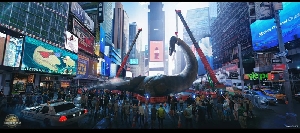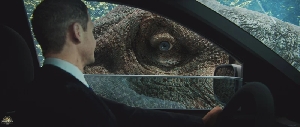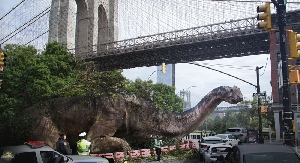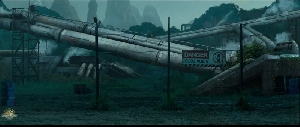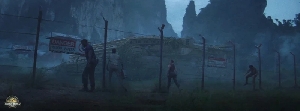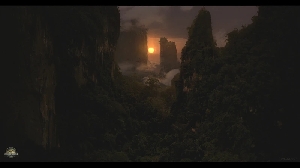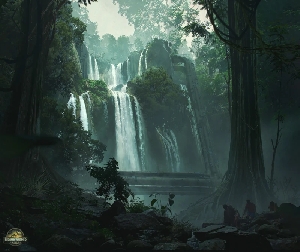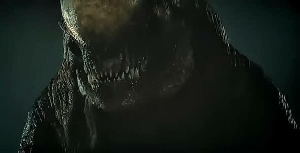Dinosaur Survival 2
Dinosaurs Forum Topic

Lord of the Spinosaurs
MemberCompsognathusNov 19, 20143467 Views12 RepliesHello and welcome to the second Dinosaur Survival, if you do not know the rules of it please check out the first one. So lets jump into it, here it is:
Predators (theropods): Carnotaurus, Allosaurus, Velociraptor, Oviraptor, Torvosaurus, Tarbosaurus, Albertosaurus, Mapusaurus, Deinonychus, and Troodon.
Prey: Gallimimus, Edmontonia, Stegosaurus, Pachycephalosaurus, Edmontosaurus, Parasaurolophus, iguanodon, Camptosaurus, Therizinosaurus, Camarasaurus, Argentinosaurus, Euhelopus, Styracosaurus, Pachyrhinosaurus, Kosmoceratops, Coahuilaceratops, Nasutoceratops, Plateosaurus, Sauroposeidon, Turiasaurus, Vulcanodon, Apatosaurus, Cedarpelta, Gastonia, Miragaia, and Kentrosaurus.
Habitat: Conifer forest with huge Conifers similar in size to modern day redwoods also with plains here and there formed by sauropods that pushed down trees.
There is no such thing as a pure predator. A meat-eater is eit
Replies to Dinosaur Survival 2
Hey Guest, want to add your say?

The sauropods and hadrasauruds would thrive though the others would probably die off since there are SOO many herbivores and do little plants.
Allosaurus(mapusaurus)-sauropods, hadrosaurids.
torvo- sauropod, hadrosaurid, ankylosaurid, ceratopsians.
Droneosaurids- hadrosaurids, gallimimus.
Tyrranosaurids- all except sauropods.
carnotaurus- gallimus
oviraptor- anything.

I believe this ecosystem wouldn't do too well, because there's a lot of herbivores, and the trees would be pretty tall for a few of the herbivores. Plus, with a bunch of carnivores, the smaller herbivores would die off. Also, the forests would probably be too dense for the larger herbivores.
“Banana oil.”- George Takei, Gigantis: The Fire Monster
Does this habitat also contain forest floor growing fernus plants, and does the habitat contain any sizeable bodys of water and or rivers.
" It is better to be reviled than ignored, agleast then you know your spreading good in this world."


TK you can assume that there are rivers in the habitat even though I did not mention any, you can also assume that there are small plants on the ground for smaller herbivores which means there are ferns, grass was not abundant in the Cretaceous becuase it evolved in the Cretaceous.
There is no such thing as a pure predator. A meat-eater is eit

You should have stated That there are ferns because this is a huge game changer. Now the the smaller herbivores won't die out.
Herbivores
Survive: Gallimimus, Edmontonia, Parasaurolophus, Camptosaurus, Pachyrhinosaurus, Styracosaurus, Vulcanodon, Apatosaurus, Camarasaurus, Miragaia, Kentrosaurus, Edmontosaurus, and iguanodon.
Extinct: Stegosaurus,Pachycephalosaurus,Therizinosaurus, Argentinosaurus, and Plateosaurus.
The rest of the herbivores that are not mentioned were left out because of the lack of knowledge about the dinosaur in general.
I would like to say that these choices are from my personal understanding of these dinosaurs (or lack thereof).
Reasons for survival
Almost all of the dinosaurs I chose to survive were already well adapted to this type of habitat with the exception of Gallimimus, and a few of the Sauropods. Another reason for these dinosaurs survival is how they would be hunted by the carnivores in the area, as well as the amount of available food for all the different species to co-exist. The last reason I believe that these herbivores would survive is because of the different territories that they would all inhabit would leave the ecosystem in a decent balance. The large Sauropods would remain in the plains and prairie lands where the smaller Sauropods would live on the forest edge along with the Ceratopsians and Hadrosaurs, and at times the smaller Camptosaurus and flocks of Gallimimus roaming from one river or body of water to another. Inside the forest would be the refuge of the smaller animals and the clutching areas for many of the herbivores, the forest interior would likely contain the smaller stegosaurs, the smaller Sauropods, the Camptosaurus, and small flocks of Gallimimus that have found rivers in the forest interior. The Hadrosaurs would also move into the forest at night, likely sleeping there for added protection of the herd then grazing at the forest edge before moving out into the plains. Edmontonia would have stayed near the forest edge but traveled into the interior for clutching.
Reasons for extinction
The dinosaurs on this list are here for the most basic of reasons; they would be hunted to extinction, and they would be out competed for food. That’s pretty much it actually their isn’t a whole lot more to say on the Meta level so onto how they would be driven to extinction. The Stegosaurus would be both out competed for food, and hunted into extinction. The Pachycephalosaurus would be hunted into extinction without a doubt in my mind, not to mention the habitat is nowhere near what they were evolved to survive in; I mean they were built for desert life not lush forest, so for now my personal judgment says they would go extinct for the reasons listed above. The Therizinosaurus would go extinct mainly because of over hunting, even though it is equipped with heavy weaponry the overabundance of such large predators would make the Therizinosaurus a very tempting target, and if I’m honest I think that the Therizinosaurus claws could only do so much to intimidate and protect it. The Argentinosaurus would die of because it’s just too large for such a place with so many other herbivores, not to mention the amount of predators that were built to take down large Sauropods would lead to the death of many Sauropods but their sizes are within the boundaries of the habitat whereas the Argentinosaurus size would turn into a crippling disadvantage. For now I will say that the Plateosaurus would go extinct but wish to chew on it further so take this choice with a grain of salt.
Well that’s it for the herbivores; I’ll be back later with my thoughts on the carnivores.
" It is better to be reviled than ignored, agleast then you know your spreading good in this world."
Carnivores
Survive: Carnotaurus, Allosaurus, Torvosaurus, Deinonychus, and Troodon.
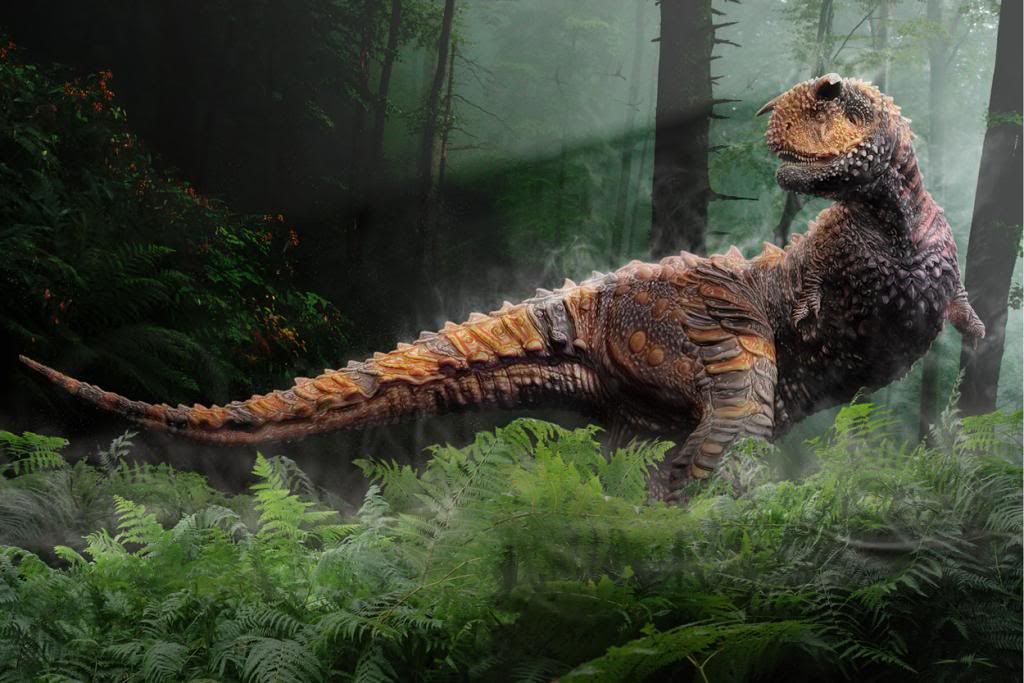
Extinct: Velociraptor, Oviraptor, Albertosaurus, Tarbosaurus, and Mapusaurus.
This list is my personal view and my best judgment as pertains to these Dinosaurs.
Reasons for survival
Now this list will probably shock a lot of people but let me explain why these predators are my choices. The ones who survived didn’t fail in more than one of these categories; they wouldn’t be out competed for food, they weren’t overly specialized, they could survive the transition into the habitat described, and they wouldn’t be wiped out by a rival species. All the dinosaurs listed under survive didn’t get into more than one of these categories or filled a specific niche in the environment.
Allosaurus would have stalked the plains following the herds of Apatosaurus on their never ending migrations while hunting the Hadrosaurs they could catch and would eventually figure out how to hunt the Ceratopsians with minimal injury. They would have hunted Camptosaurus but wouldn’t have been able to catch the Gallimimus except by ambush.
Torvosaurus would have followed mostly the same patterns as Allosaurus hunting Sauropods, Hadrosaurs, Ceratopsians, and the Camptosaurus.
With the inevitable fall of the super specialized apex predators and not much in the way of competition from the other large carnivores the Carnotaurus would inevitably become the top predator in the region. And I can say this with certainty because of what is known about these predators, the Carnotaurus skull was short and broad with long but slender teeth. And even though the lower jaw was relatively week tests show that the upper jaw was able to withstand great forces and had a bite force that was twice as powerful as the American alligator which also gave it the ability to hunt the regions Sauropods, the Saltasaurus. While the Carnotaurus was lightly built for a predator of its size, that would prove to be a formidable weapon as it was capable of the fastest movement speed of all large carnivores with speed estimations ranging from 25-40 mph. The Carnotaurus would have had the ability to feed on every prey item in the region from the Sauropods down to the Gallimimus and probably even the Ankylosaurs once they figured out how to hunt them. The Carnotaurus would have dominated this region setting up massive territories and defending these territories to the death. If the Allosaurus is considered the Lion of such forest and prairie environments then the Carnotaurus is the tiger.
Deinonychus would thrive in this ecosystem because of the available prey, and the closeness of the habitat to their original habitat. Deinonychus would live in the forest interior where their size would make chases in the dense foliage relatively easy, and ambushes almost imposable to detect, though some would be forced to move out onto the forest edge and the prairie hunting the Hadrosaurs, Camptosaurs, and Gallimimus. Deinonychus would also be the downfall of the Velociraptor through the stealing of their kills, and killing them for food and competition for territory.
Troodons would have likely inhabited the same places as the Deinonychus but would rarely if ever come into conflict over territory or food due to the fact that Troodons are thought to have been mostly nocturnal and eaten small mammals and reptiles instead of Dinosaurs. Although some Troodons in what is now modern day Alaska grew to the size of Deinonychus threw special hunting tactics of hadrosaurs that were developed and could be used here.
Reasons for extinction
Very short list with explanations; they would be out competed for food, they were to overly specialized, they couldn’t survive the transition into the habitat described, and they would be wiped out by a rival species.
Mapusaurus would have died with the Argentinosaurus, and even before then the population would have been strained by the rival Tarbosaurus, Torvosaurus, Allosaurus, and Carnotaurus. And its inability to transition from an arid badlands type of habitat into the coniferous and humid forest and prairie habitat. And while they could hunt the smaller Sauropods their population would be so strained because of the fighting with the Tarbosaurus that they would eventually go extinct.
Velociraptor/Oviraptor would have lived for some time before their numbers dwindled because of improper habitat (they were adapted to desserts, I can’t think of a habit less supportive unless you threw it in the ocean) and being out competed by the Deinonychus, and the lack of proper prey.
Just like Mapusaurus, Tarbosaurus would have died off with the Gastonia even though it could hunt the Edmontonia, but living in the forest interior would have been too restricting for a creature the size of Tarbosaurus. Their numbers would have also been hampered by the rival Mapusaurus, Torvosaurus, Allosaurus, and Carnotaurus. The Tarbosaurus would survive by bullying the other predators but just like the Mapusaurus improper habitat, overspecialization, and fighting with other predators would drive them to extinction, and take the Mapusaurus with them.
Albertosaurus would survive after the fall of the apex predators, but with their numbers already strained, and more competition than the remaining population can handle, as well as being the smallest of the large carnivores. Their numbers would eventually dwindle due to being bullied out of their hunts, and getting killed by the other larger theropods, and that would lead to their eventual extinction.
" It is better to be reviled than ignored, agleast then you know your spreading good in this world."
@Dilophosaurus
Whilst I do agree with nearly everything, I must say that your reasoning on why Albertosaurus would go extinct doesn't seem that legitimate since Albertosaurus would have been the second largest predator in the eco system (after the extinction of Tarbosaurus and Mapusaurus) and being one of the most agile carnivores on the list would've also helped it quite a lot.
Keep in mind that many people have died for their beliefs; it's actually quite common. The real courage is in living and suffering for what you believe in. -Brom-
@UCMP 119742
The Albertosaurus was actualy the smallest of the large carnivores in the region, while it was a Tyrannosaur it weighed less than two tons, and while it may have been longer than the other carnivores it was also the smallest in height reaching slightly less than three metres. Where the other carnivores grew to agleast 2.5 tons, and stood (except for a sub-adult allosaurus) 3-3.5 metres and taller. And while it may have been an agile predator the Carnotaurus and Allosaurus were likely faster, and the unlike the other predators the Albertosaurus didnt have the intimidation factor to defend its kills from the said predators. And while it was a Tyrannosaur with a devastating bite, the other carnivores were just as deadly with the Allosaurus and Torvosaurus being its main competition. And it is my personal belief that the Torvosaurus would have overlaped with the Albertosaurus in so many areas that they would push them to extinction.
" It is better to be reviled than ignored, agleast then you know your spreading good in this world."
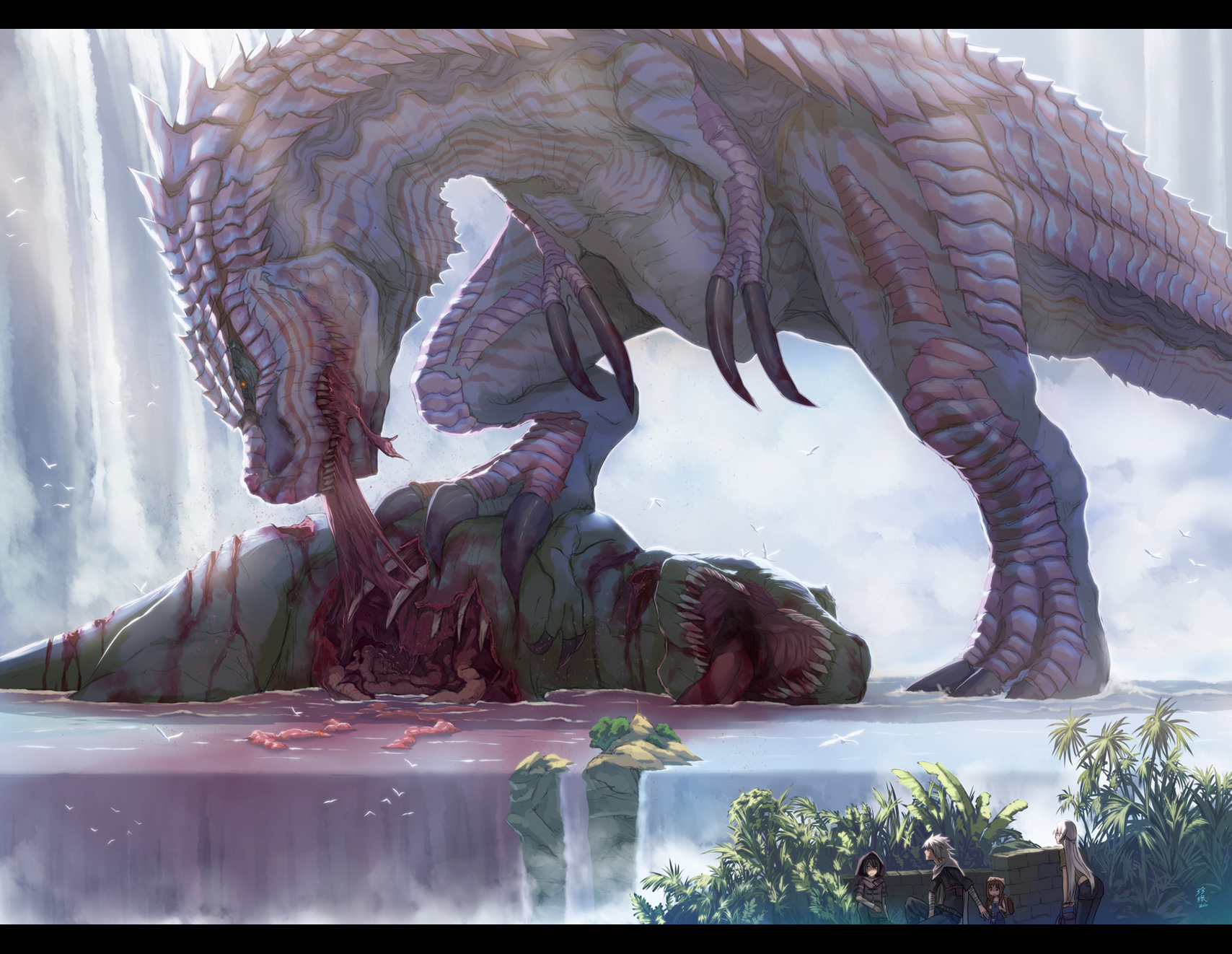
I have a question would the albertosaurus be in packs, like some evidence suggest or would the be lone wolf ? Because if they where in packs they would have a great chance of surviving with all the larger carnivores instead of being alone.
( '_')=mm=('_' ) brofist
In my callculations, instead of giving one predator an advantage over the others by giving them somthing as inconclusive as pack hunting. In my personel opinion predatory dinosaurs more than likely lived in small family groups, the two parents mated for life, and the young shadow the parents until they are old enough to go find a mate and claim terittory for its family. And I make these conclusions by looking at modern predatory birds, which almost all species mate for life.
" It is better to be reviled than ignored, agleast then you know your spreading good in this world."
Are you an avid Jurassic World fan looking for a dedicated online community of likeminded fans? Look no further! Create your own profile today and take part in our forums and gain XP points for all the content you post!

